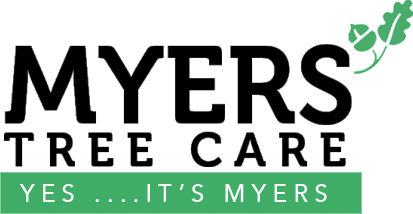When is it the right time to fell a tree?
This is a question often asked of tree care specialists by onlookers and interested members of the general public. Below David Myers explains some of the more common reasons for dismantling and removal of trees, and adds that “Unfortunately this ‘necessary evil’ of our profession can sometimes make the industry look like simple ‘tree fellers’ and not the carers of our environment that we strive to be.”
1. Dead, dying or diseased trees:
Not always obvious to the untrained eye but trees do show signs of decline that are usually readily identified by the tree care professional. When a tree becomes infected or is beginning to decline it will often have amounts of deadwood within the canopy. If left this material can become a serious hazard to people and property. During winds debris will become dislodged and fall to the ground, often causing great damage.
Once a problem has been discovered, and if there is no alternative method of care, then a full assessment will determine the correct course of action for the tree’s felling and removal. In the ideal world, problem trees should be dealt with at the earliest stages of decline because this will aid the safety of the climber and other tree surgery operatives. Dead trees pose far more hazards than live ones and may dictate the use of a Mobile Elevating Work Platform (MEWP or Cherry Picker) because the tree is far too unsafe to climb.
Sometimes disease will sweep across the county attacking a particular species of trees, like Dutch elm disease. As David remembers, “through the seventies, that’s all you could see, all the Elm’s coming to blows with the chainsaws. This was a big inspiration as a child and sealed my fate when I saw those men climbing and working on those poor Elm’s – I found the subject truly fascinating.”
More recently we have a disease that has impacted the Horse Chestnut tree and once again we are seeing a beautiful species of tree go into an irreversible decline. Sadly the Horse Chestnut population is unlikely to fully recover from the disease that is now affecting it.
2. Development or construction of a site
When an urban site is to be developed there may be trees that will ultimately affect the planning proposals and have therefore been approved for felling and removal. A selected number of trees and shrubs may need to be removed prior to commencement of the construction of new foundations, fence lines and new buildings.
Local Authorities have strict guidelines that must be followed in situations like this and often developments will be designed to accommodate existing mature and healthy trees. Planning permission may also specify the pruning of existing trees, and often includes the nice part, which is the re-planting of the developed site with new trees.
3. Damage to structures and property:
Often people with little knowledge, or poorly advised by garden centres, will plant unsuitable species of trees too close to buildings. To begin with, problems may not be apparent but over the years as a tree grows it can cause huge damage to a building’s structural foundations, drainage, garden walls, or neighbouring properties.
In these situations, felling and removal of the tree is usually the only solution available, though sometimes it may be possible to avoid this by the employment of a specialised pruning regime. Myers Tree Care’s professional tree surgeons will be able to advise and recommend the customer’s best options.
4. Personal choice:
Our least preferred reason but as a professional tree care company and as part of our tree surgeon services we will remove trees at the client’s request, even if there is not an underpinning professional or environmental reason to do so. Obviously, if a tree has a preservation order on it, or is in a conservation area then we will not act without the proper authority to do so.
Wherever possible we will try to offer other options that may satisfy the client’s requirements, though sometimes they may not wish to consider other more ethical options that may save a tree from felling and removal.


